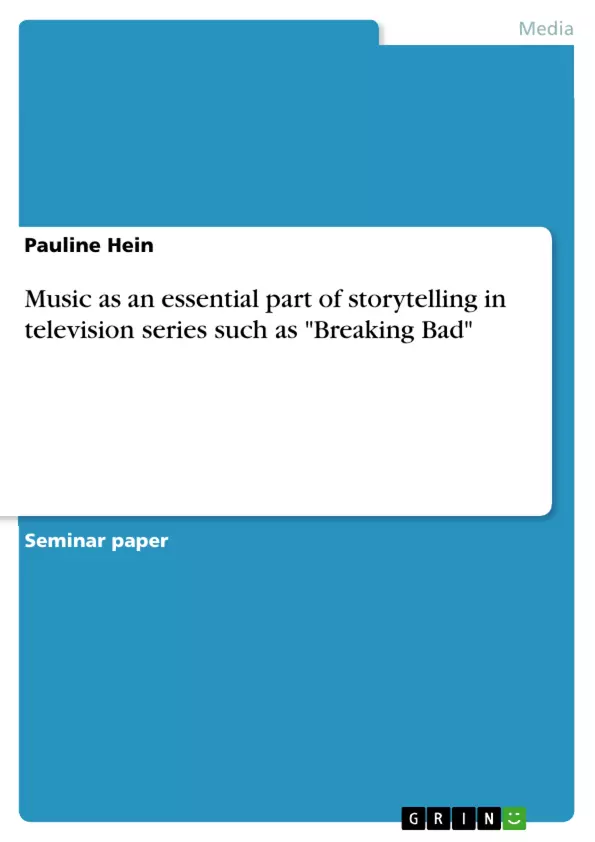Television series have become more and more popular in the course of time. Analyses of this kind of scripted entertainment deal with quality and quantity of content and form. The following term paper focuses on the aspect of music in television and in this sense intents to show, that the soundtrack is an essential part of the narrative storytelling in television series. "Breaking Bad", an American crime drama television series, serves as an example within the context of this term paper.
The so called "auteur series" express a historical turn, from the silent film era to todays new American television culture, on the level of content and form, by acquiring innovative stylistic devises (from both, cinema and television). Many scientific researches survey television series in terms of dramaturgy or the pictorial design, whereby the area of sound design has received less attention for a long time.
The purpose of this work is first of all to consider the expression and significance of musical ideas and concepts in televisual structures in theory, and secondly to analyze in how far the music supports the narrated story, especially the character change of one of the main characters in "Breaking Bad", namely Walter White, who – as the series’ title says – "breaks bad".
- Quote paper
- Pauline Hein (Author), 2015, Music as an essential part of storytelling in television series such as "Breaking Bad", Munich, GRIN Verlag, https://www.grin.com/document/354546



